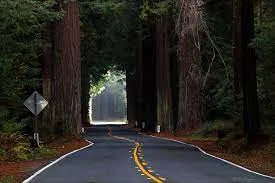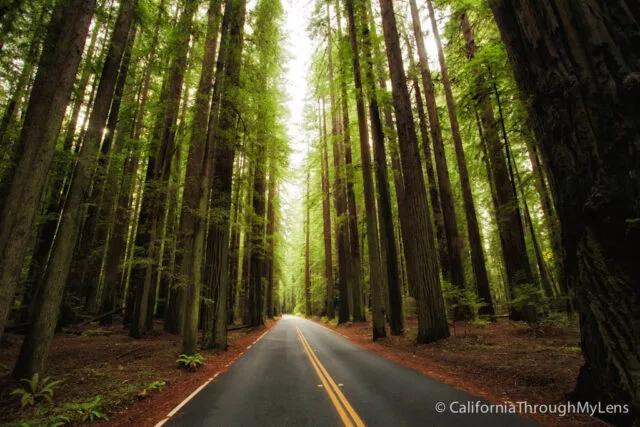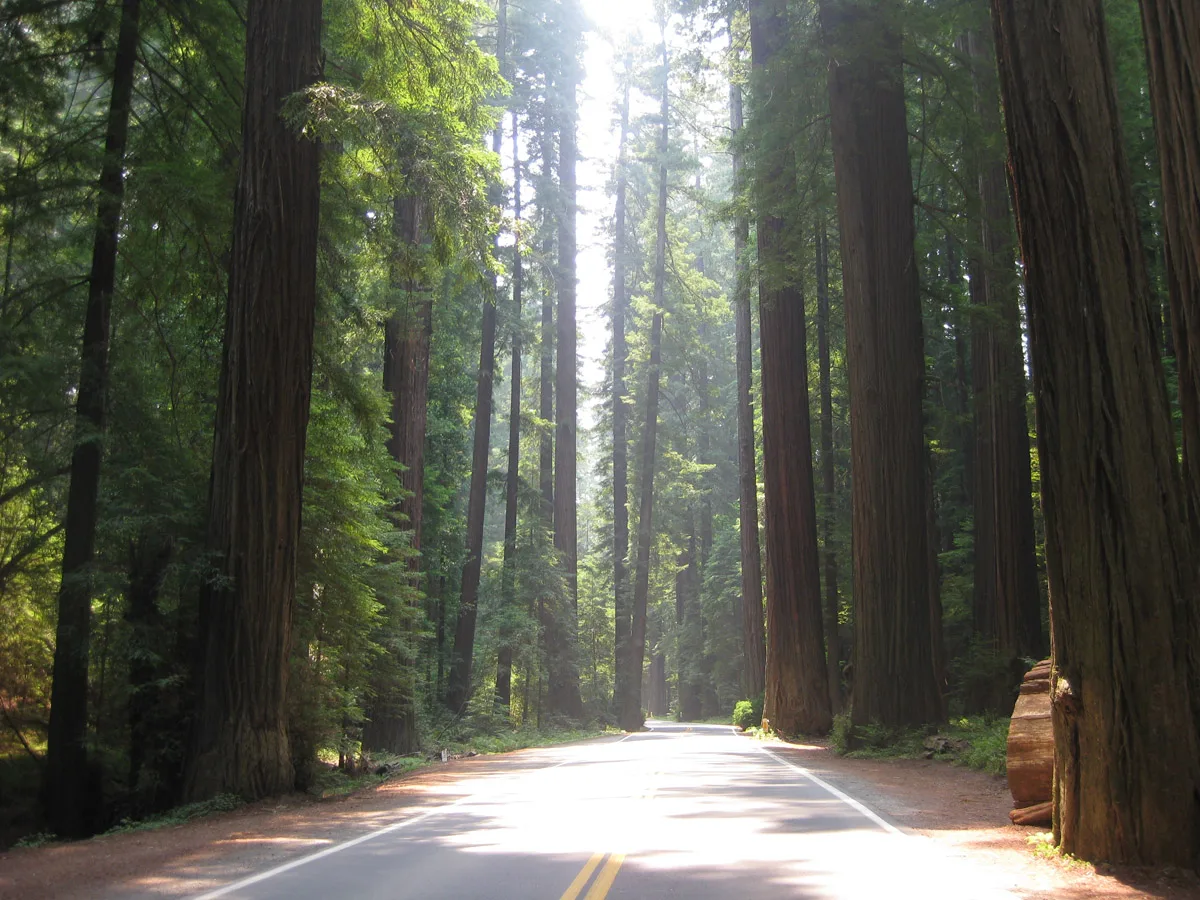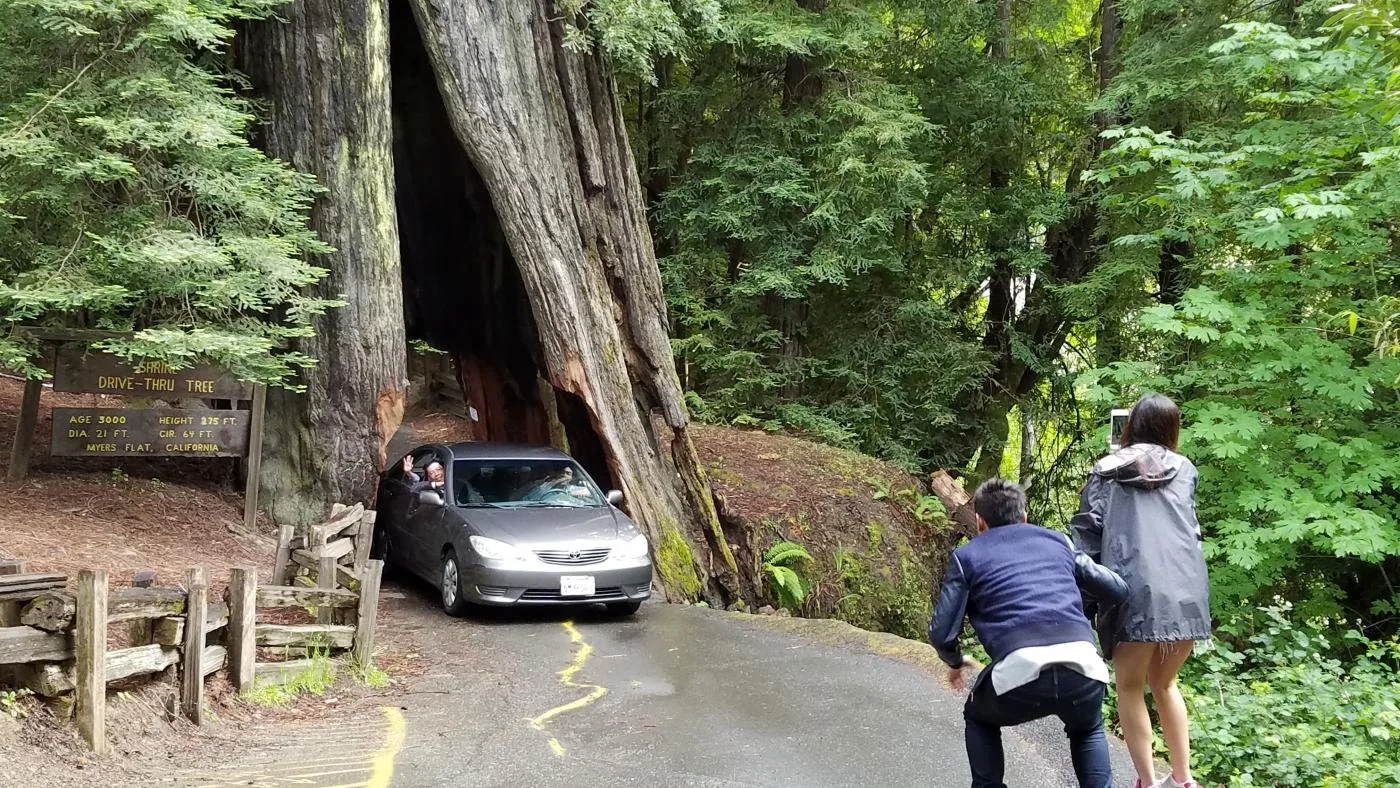Picture yourself driving along a winding road, enveloped by a towering canopy of ancient redwoods that stretch toward the sky, their massive trunks standing like silent sentinels of time. This is the Avenue of the Giants, a 31-mile scenic highway that cuts through the heart of Humboldt Redwoods State Park in Northern California, USA. Often described as one of the most breathtaking drives in the world, this iconic stretch of road offers an unforgettable journey through some of the tallest and oldest trees on Earth. In this blog post, we’ll explore the magic of the Avenue of the Giants, its natural wonders, the ecological significance of Humboldt Redwoods State Park, and tips for experiencing this majestic landscape.

The Avenue of the Giants: A Road Like No Other
The Avenue of the Giants is a 31-mile segment of the old U.S. Route 101, running parallel to the modern highway through Humboldt Redwoods State Park. Located in Humboldt County, Northern California, this scenic byway is renowned for its intimate connection to the towering coastal redwoods (Sequoia sempervirens), some of which soar over 300 feet tall and have stood for thousands of years. The road weaves through dense groves, with sunlight filtering through the canopy to create a serene, almost otherworldly atmosphere.

Driving the Avenue feels like stepping into a prehistoric forest. The redwoods’ massive trunks, some wide enough to carve tunnels through, line the route, while ferns and mosses carpet the forest floor. The road is dotted with pullouts, hiking trails, and interpretive signs, making it easy to stop and immerse yourself in the natural splendor. Whether you’re a nature lover, a photographer, or simply seeking a peaceful escape, the Avenue of the Giants delivers a profound sense of awe.
Humboldt Redwoods State Park: A Sanctuary of Giants
Humboldt Redwoods State Park, encompassing over 53,000 acres, is one of California’s largest state parks and home to the world’s largest remaining contiguous old-growth redwood forest, covering about 17,000 acres. Established in 1921 with the help of the Save the Redwoods League, the park protects these ancient giants, some of which predate the Roman Empire. The coastal redwoods here are not only the tallest trees on the planet but also among the most resilient, with thick bark that resists fire and pests.

Key attractions within the park include:
-
Founder’s Grove: Home to the 346-foot-tall Founder’s Tree and the fallen Dyerville Giant, which was once one of the tallest known trees until it fell in 1991.
-
Rockefeller Forest: The world’s largest old-growth redwood forest, with trees so dense they create a cool, shaded microclimate.
-
Shrine Drive-Thru Tree: A famous redwood with a tunnel carved through its base, allowing visitors to drive or walk through (one of several such trees along the route).
The park’s ecosystem supports diverse wildlife, including black bears, Roosevelt elk, river otters, and the endangered marbled murrelet, a seabird that nests high in the redwood canopy. The Eel River, which parallels parts of the Avenue, adds to the park’s scenic beauty and ecological richness.

The Redwoods: Titans of Time
Coastal redwoods are a marvel of nature. These trees can live over 2,000 years, grow taller than a 30-story building, and have trunks up to 20 feet in diameter. Their ability to thrive comes from the region’s unique climate—mild, wet winters and cool, foggy summers provide ideal conditions. Redwoods also have an extraordinary ability to regenerate, sprouting new growth from fallen logs or even their own roots.

The Avenue of the Giants showcases these titans in all their glory. As you drive or walk, you’ll notice the interplay of light and shadow, the scent of damp earth, and the quiet hum of the forest. Some trees bear scars from past fires or floods, yet they stand resilient, a testament to their endurance. The redwoods’ grandeur has inspired conservation efforts for over a century, ensuring their protection for future generations.
Highlights Along the Avenue
The Avenue of the Giants is more than just a road—it’s an experience packed with opportunities to explore. Here are some must-see stops:
-
Visitor Center near Weott: A great starting point with exhibits on redwood ecology, maps, and ranger-led programs.
-
Women’s Federation Grove: A peaceful spot with a historic log cabin and easy trails through towering trees.
-
Immortal Tree: A redwood that has survived lightning, floods, and even a logger’s axe, symbolizing the resilience of these giants.
-
Eel River: Pull over to enjoy views of this scenic river, which winds alongside the Avenue and offers spots for picnicking or wading.
Hiking trails, ranging from short loops to longer treks, branch off from the road, letting you wander deeper into the forest. The Gould Grove Nature Trail, for example, is an easy half-mile loop perfect for families, while the Bull Creek Flats Trail offers a more immersive hike through old-growth groves.
Planning Your Visit
Visiting the Avenue of the Giants is a bucket-list experience, but a little planning goes a long way:
-
Best Time to Visit: Spring and fall offer mild weather and fewer crowds. Summer is popular but can be busier, while winter brings lush greenery but occasional road closures due to rain.
-
Getting There: The Avenue is accessible via U.S. Route 101, with entrances near Garberville (south) and Scotia (north). It’s about a 4-hour drive from San Francisco or 5 hours from Sacramento.
-
Tips: Drive slowly to enjoy the scenery and watch for pedestrians or wildlife. Cell service is spotty, so download maps in advance. Bring layers, as the forest can be cool even in summer.
-
Nearby Amenities: Small towns like Garberville, Myers Flat, and Fortuna offer lodging, dining, and camping options. The park itself has several campgrounds, such as Burlington and Hidden Springs.
Conservation and Legacy
The Avenue of the Giants exists thanks to decades of conservation efforts. In the early 20th century, rampant logging threatened California’s redwoods, but groups like the Save the Redwoods League rallied to protect them. Today, Humboldt Redwoods State Park stands as a testament to their success, preserving a vital piece of Earth’s natural heritage. Visitors are encouraged to tread lightly, sticking to trails to avoid damaging the fragile forest floor.
The redwoods also hold cultural significance for Native American tribes like the Sinkyone and Wiyot, who have lived in the region for millennia. Their stories and traditions add depth to the park’s history, reminding us of the deep connection between people and this landscape.
Conclusion
The Avenue of the Giants is more than a road—it’s a journey through time, where ancient redwoods tell the story of a planet that has thrived for millennia. Driving through Humboldt Redwoods State Park, you’ll feel the weight of their presence, a humbling reminder of nature’s grandeur. Whether you stop to hike, snap photos, or simply soak in the silence, the Avenue offers a rare chance to connect with one of Earth’s most awe-inspiring ecosystems.
So, pack your bags, hit the road, and let the giants of Humboldt welcome you into their timeless embrace. The Avenue of the Giants is waiting to leave you spellbound.





